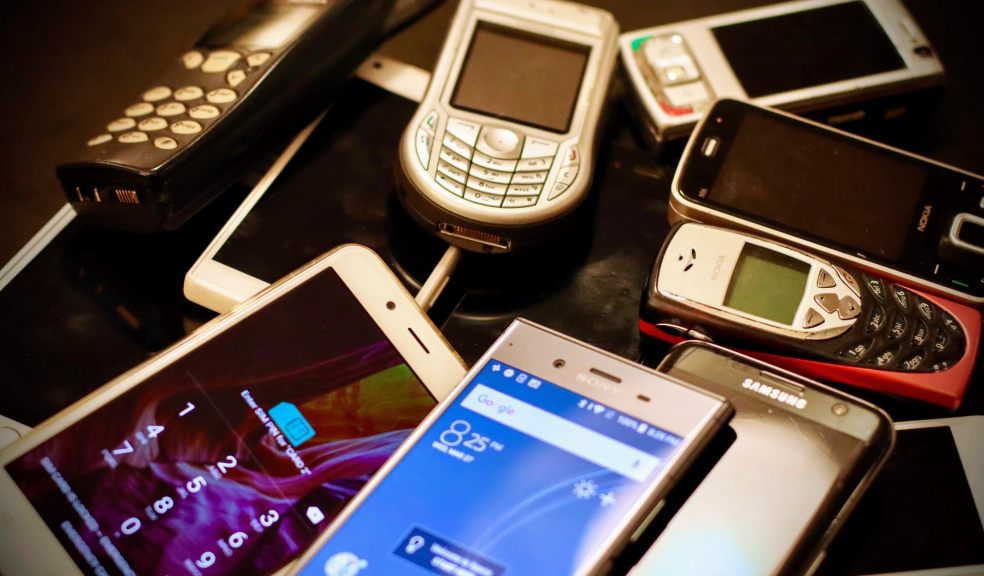
Mobile phone environmental facts: Numbers don't lie
Mobile phones are universally popular because of their convenience. A good smartphone can allow you to accomplish several things such as interacting with people who live far away from you, transferring data, social networking, taking photos and videos, listening to music, web browsing, mobile gaming, among others.
As of May 2021, the number of smartphone users in the world has reached 3.8 billion, which constitutes to 48.33 percent of the world's population owning a smartphone.
In total, the number of people that own a smart and feature phone is 4.88 billion, making up 62.07 percent of the world's population.
According to Statista, smartphone vendors sold around 1.38 billion mobile phones worldwide in 2020. Smartphone penetration rate has continued climbing, reaching 46.5 percent in 2020, and by 2025, it was forecasted that almost 87 percent of all mobile phone users in the United States will own a smartphone.
What are the impacts of mobile phones on the environment?
While these devices offer multiple functionality and convenience, mobile devices may be harmful to the environment and health. There are also the waste disposal issues that may be associated with the discharge of radiation.
Mobile phones gobble up power and precious metals before they end up in the landfill. Building every phone requires the polluting extraction of irreplaceable elements like gold, cobalt, or lithium.
The most contaminating part of the life cycle of the phone is the manufacturing stage. Around 80 percent of each of the phone's carbon footprint is generated in this stage. Why, you ask? This is due to the mining, refining, transport and assembly of the dozens of chemicals elements that make up cutting-edge tech.
If these electronics are not disposed properly, they can end up in the rivers and soil, which in turn will contribute to cancer, damage to the nervous system and to brain development in children.
Around 80 percent of each of the phone's carbon footprint is generated in the manufacturing stage. (Photo credit: cdn.vox-cdn.com)
The following are some of the environmental risks when it comes to mobile phones, especially when they are not disposed properly or not recycled.
- Hazardous materials. Mobile phones contain materials such as iron for the speakers and microphones; aluminum and magnesium for the frames and screen; copper, silver and gold for the electronic circuits; graphite and lithium for the batteries; silicon for the processor; and lead and tin for the solderings. Phones also require 16 of the 17 rare earth metals, like neodymium and terbium.
Hazardous materials such as lead, mercury, cadmium, arsenic, and brominated flame retardants, if tossed in landfills, can contaminate the air, soil, and groundwater.
- Mining. As previously mentioned, mobile phones are made of valuable minerals that are increasingly becoming scarce. Mining for components is deeply problematic as besides causing the contamination of the atmosphere, the process destroys ecosystems and generates tailings, which are toxic byproducts which seep into the soil and water.
Did you know that gold mining for the technology industry is one of the main causes of deforestation in the Amazon? Apart from that, the extraction process generates mercury and cyanide waste. These wastes contaminate river systems and drinking water.
The process of obtaining the lithium, which fuels the batteries of your mobile phone, causes the evaporation of huge quantities of water, to the detriment of local farmers.
- Energy consumption. No one can deny the fact that the production of new mobile phones contributes to climate change. This happens by exhausting energy and virgin materials in processes, which result in the release of greenhouse gases into the atmosphere.
The manufacture of a mobile phone, as estimated by the United Nations Environment Programme, produces about 60 kg of CO2e or carbon dioxide equivalent, and using a mobile phone for a year produces around 122 kg of CO2e.
At present, emissions caused by smartphones jump from 17 to 125 megatons of CO2 equivalent per year.
- E-waste. The average lifespan of a mobile phone is estimated to be two to three years and after that, most smartphone users tend to upgrade their old phones even though they are still perfectly functional.
With the disposal of old phones, this leads to an incredible amount of unsustainable waste. E-waste emits damaging contaminants such as arsenic, lead, mercury and zinc, which can pollute the atmosphere. These contaminants can also hamper the health of local populations.
- Microplastic. The plastic housing of your phone contributes to the dangerous problem of microplastic. Microplastic is any piece of plastic measuring five millimeters in size down to one micrometer. Researchers and experts have found evidence of microplastic contamination almost everywhere, such as in oceans, beaches, lakes, rivers, beverages and food supplies.
Microplastic is dangerous for living organisms since aquatic species and humans can absorb microplastic particles.
What are the health risks associated with mobile phones?
Mobile phone use is widespread and the number of users continues to rise. This has caught the attention and concern of medical researchers on health risks associated with smartphones, even small ones, which could cause significant public health problems. What are these health concerns over mobile phone use?
- Radiation. Radiation, also referred to as electromagnetic radiation, is a combination of electrical and magnetic energy that travels through space at the speed of light.
Radiation from your mobile phone has the biological effect of raising the temperature in a localized area of your brain by a fraction of a degree. High levels of radiation overheat your body tissues and cause damage.
The exposure to radiation from mobile phones may also play a vital role in the growing spate of serious problems, which include attention and hearing deficits, autism, behavioral changes, insomnia, tinnitus, Parkinson's disease, Alzheimer's disease, and a broad array of nervous system disturbances.
- High-toxic substances. There are several health hazards associated with high-toxic substances released from the mobile phones. Researches stated that cadmium may cause lung and prostate cancer, and is toxic to the gastrointestinal tract, the kidneys, and the respiratory, cardiovascular and hormonal systems.
Lead, on the other hand, causes damage to the central and peripheral nervous systems, blood systems, and kidneys. Brominated flame retardants also may increase the cancer risk of digestive and lymph systems.
The increase in the frequency of mobile phone usage was associated with sleep disturbances and symptoms of depression for men and women at one-year follow-up.
- Road accident. Using a mobile phone while driving greatly increases the risk of traffic accidents. Talking on your hand-held mobile phone while driving is illegal in some states and countries. Even if you are not driving, if you are using your smartphone without looking at where you are going, it will lead you to getting into a road accident.
How can you, a smartphone user, help preserve the environment?
Improper waste disposal harms the environment and can be easily avoided by recycling your old phone. (Photo credit: mymemory.co.uk)
As a smartphone user, you can help save the environment by recycling your old phones. Here's how:
- Take your old phone to a recycler or a tech firm. You can ask for help from nonprofit organizations and local communities that can offer you options on how to recycle your old phones. These organizations usually test the basic functions of your phone to make sure that it is in good shape. If it isn't, they will recycle it. You can also take it to electronic manufacturers and retailers that offer recycling programs.
Examples of these tech firms are Amazon, which offers gift cards for your device; Apple, which will give you gift cards or in-store credit; Best Buy, which offers recycling options; and others.
Trade in your old phone. You can go to phone manufacturers that offer trade-in programs that provide credit toward a new mobile device. There are also a variety of companies that buy old phones to recover the materials they contain or resell them.
- Donate your old phone. If your old phone still works, you can donate it to a charity or nonprofit organizations. For example, you can donate your old phone to cellphones for Soldiers, an organization that has been helping troops call home at no charge.
- Buy refurbished phones. Believe it or not, the environmental impact of using refurbished phones is much less than buying a new product. Improper waste disposal harms the environment and can be easily avoided by buying a refurbished phone.
By opting for a refurbished phone, you are basically extending the product's lifespan. This, in turn, will save a properly functioning phone from ending up in the landfill. Using a refurbished phone reduces the environmental impact as well as the carbon footprint.
The continuous manufacturing of smartphones will result in waste production and since recycling is not always possible, the waste ends up in landfills. If you buy a refurbished phone, you can help put an end to this cycle.
As you plan on what to do to recycle your old phone, you should remember not to store your old phone long-term in your home or office. Unused mobile phones and batteries can become dangerous if exposed to temperature extremes or moisture. This will potentially expose you and others to harmful substances.
If you are looking for a refurbished phone that will suit your needs, it is recommended that you purchase the iPhone 8, refurbished and unlocked. At QwikFone, the iPhone 8 refurbished deal comes with free brand new accessories, a one-year warranty as well as a 30-day return period with full refunds.

















